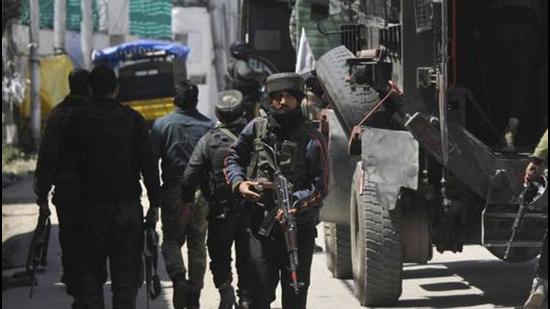The Pulwama investigation and its lessons for India on countering terror
Pulwama represented a rupture in various ways, including redefining the Indian State’s response to terror attacks. It was also a moment where the ineffective dossiers prepared by our investigation agencies would give way to solid, evidence-backed investigation
In June 2019, Sajjad Bhat, a terrorist belonging to the Pakistan-based Jaish-e-Mohammed, was killed in an encounter with security forces in South Kashmir. A car procured by Bhat (and filled with explosives)was used by another militant in February in the deadliest terrorist attack Kashmir had ever seen in its 30 years of bloodied history.

Pulwama represented a rupture in various ways, including redefining the Indian State’s response to terror attacks. It was also a moment where the ineffective dossiers — international agencies would complain that they looked like Wikipedia entries — prepared by our investigation agencies would give way to solid, evidence-backed investigation.
As the National Investigation Agency (NIA) connected the dots all the way to Pakistan, their investigation revealed that Jaish carried out this attack to dent Prime Minister Narendra Modi’s image just before the general elections. But not only did it misfire, it also contributed to Modi’s landslide victory. The attack also speeded up his government’s decision to do away with Article 370 later that year.
Also Read | AIIMS Pulwama hits a wall as army red flags construction
In June 2019 when Bhat was killed, however, not much was known about the attack. A few leads came to NIA investigators immediately after the suicide bombing. A few other minor players such as Bhat (who officially joined Jaish a few days after Pulwama) were identified and hunted down with great fanfare. But the security agencies hadn’t cracked the case.
With Bhat’s death, the investigation came to a dead end. At that point, NIA investigators started looking for clues beyond what they could find at the site of the attack.
It is because of this diligence that the conspiracy began to unravel one puzzle piece at a time, ultimately leading to a man, a ruthless manipulator and killer, trained in the best joint facility of al-Qaeda and Jaish in Afghanistan.
It was a meticulous investigation, involving a lot of hard work and some lucky breaks. An investigation where NIA officers, with the help of their colleagues in Jammu and Kashmir Police, used an effective mix of human intelligence and technology.
Along with the unravelling of the main conspiracy, other crucial information come to light. The investigation revealed that Jaish was using tunnels along the international border in Jammu to sneak into India with sophisticated arms and explosives.
For this, it used a network of local sympathisers who, in at least one case, brought almost three dozen terrorists to the state in a year. The tunnels were an engineering marvel, and along with use of drones to drop weapons, posed a challenge for which India was unprepared. The investigation also confirmed the ugly innards of counterinsurgency, of how men considered informers by intelligence agencies turned out to be dangerous terrorists.
But perhaps most importantly, the investigation also highlighted the limitations of our current counterinsurgency model in Kashmir. The hunting down of terrorists is important, and security agencies are quite good at it. But this cannot be the end goal.
One of the men, almost a boy, arrested in the Pulwama conspiracy is from an affluent family. Yet the Jaish reached him, turning him into their courier, although behind his back, they mocked him, calling him a bhola (simpleton). Bhola is in jail now — where last heard, he was preparing for his medical entrance exams.
If we have to have a long-lasting success in Kashmir, we must do two things. One, we have to ensure the Bholas of the future do not turn radical. Two, we must not stop the chain of investigation once a terrorist on the hitlist is eliminated. Our investigations must go beyond the site of the encounter. This is only the starting point.
We committed the same mistakes after the Parliament attack mastermind Ghazi Baba was killed in 2003. He was technically the first Jaish recruit and it was the infrastructure he created that the militant group still uses in Kashmir. What we leave behind carelessly once we have achieved our immediate target comes to bite us in the future in devastating ways. That is the lesson of the Pulwama investigation.
Rahul Pandita is the author of The Lover Boy of Bahawalpur: How the Pulwama Case was Cracked
The views expressed are personal
Continue reading with HT Premium Subscription




